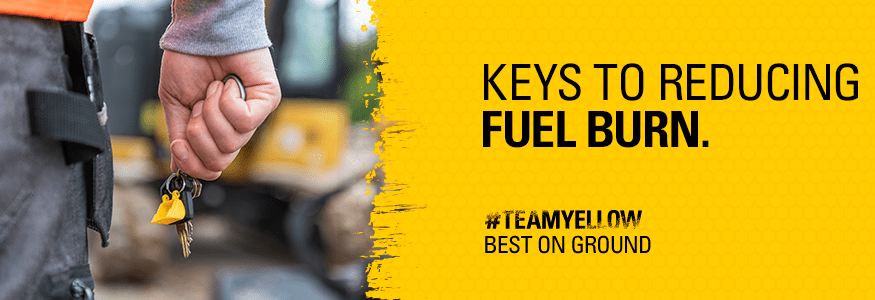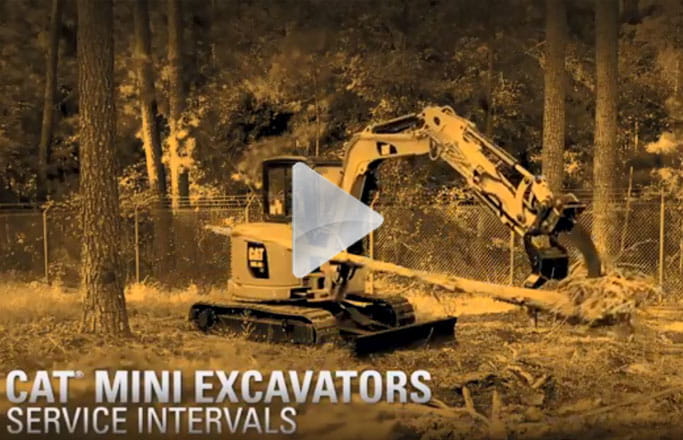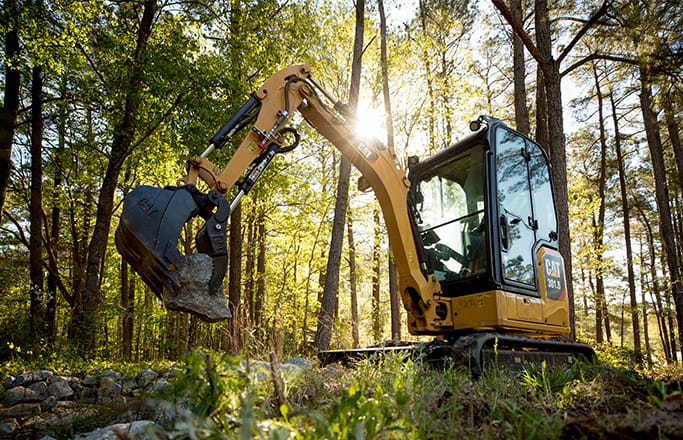Six fuel efficiency tips - Mini Excavators
Here are six tips to help you cut fuel costs by keeping your Cat mini excavator running at maximum efficiency.

Here are six tips to help you cut fuel costs by keeping your Cat mini excavator running at maximum efficiency.

This is the easiest and most cost-effective change to make that has the largest impact on your mini excavator's fuel efficiency. As an air filter traps dirt, air flow is restricted. And if the engine can’t get the air it needs, it cannot perform to specifications. That’s why changing/cleaning your air filter on a regular basis can significantly improve fuel economy.
Some excavators come standard with an air-flow restriction indicator that warns the operator when it is time to change the filters. However, waiting for this warning means you’ve already arrived at the point where you’re likely wasting fuel.
A visual inspection should be done every 50 hours to ensure peak operating performance. Most machines allow quick and easy access to the filter and can be easily inspected daily before starting the job.
Don't know how to do a quick visual inspection? Check out this video.
Keeping the working end of an excavator properly lubricated can help improve fuel efficiency by requiring less power to perform digging functions. The majority of grease fittings on the working end of an excavator should be greased daily, or weekly at the longest.
For more information on lubricating your machine properly, read 'Grease is the word'.
Changing the hydraulic oil according to the manufacturer’s recommendations can help improve hydraulic system efficiency, which in turn can help improve fuel efficiency. Excavators are basically a hydraulic power unit. So, the more efficient the hydraulics, the less power that’s required to perform the tasks.
Shop for hydraulic oil right now on Parts.Cat.Com (PCC).
Changing the engine oil according to the manufacturer’s recommendations ensures proper lubrication, which means less friction during operation. The easier it is for engine parts to spin, the more efficient it will be.
Click Cat oils to find out more and discover why they are are superior.
If the job you are performing does not require full power, running the engine at a slightly lower engine RPM can have a significant impact on fuel economy. Most compact excavators have very efficient hydraulic systems that function with power and control, even at reduced engine RPM.
“Most mini excavators aren’t doing production digging on a daily basis, so a low RPM is usually fine,” said Caterpillar analyst Darren Wilson.The right combination of engine and hydraulics helps improve performance.
“When comparing two excavators in the same size class, one might have 25 percent more gross engine horsepower, but the hydraulic horsepower could be neck and neck,” Wilson explained. “While gross horsepower is an important consideration, hydraulic horsepower is what really matters, because it measures pump output. You want an engine and hydraulic system that operate at peak efficiency.”
Use VisionLink to keep an eye on fuel burn so you can gain a better understanding of when and how your mini excavator is burning fuel. You might find out your machine is left running on idle for long periods of time, burning fuel unnecessarily.
This is very useful if you have employees or contractors using your machine to do the work. In a situation whereby you've got two operators, using the same machine, to do the same job, you might find out one operator is able to use the mini excavator a lot more efficiently than the other. This would provide an opportunity to improve the other operator's performance.
[Article content sourced from Caterpillar]

A well-lubricated machine is a high-performing machine - help keep your equipment running at peak performance by getting to know the greasing points for your Cat mini.

Built to tackle many tasks, Cat mini excavators operate at peak performance when daily maintenance & walk around inspections are performed.

No matter your application, we have a Cat attachment purpose-built for your Cat Mini Excavator. Learn how to get the most from your machine, whether you’re digging, lifting or handling material.